Septic Field Plant Choices – Suitable Plants For Septic Systems
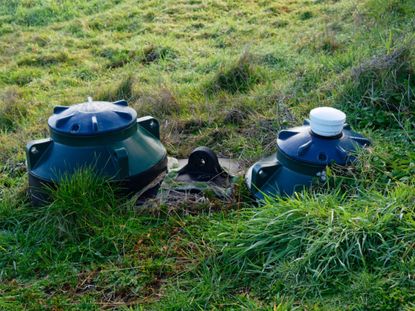

Septic drain fields pose a difficult landscaping question. They often cover a large area of land that would look strange uncultivated. On a shady piece of property, it might be the only sunny patch available. In a dry climate, it might be the only moist patch. On the other hand, not just anything is safe to grow on a septic drain field. Keep reading to learn more about picking suitable plants for septic systems.
Growing Over Septic Tanks
What is a septic drain field? Basically, it’s an alternative to sewer systems, usually found on rural properties. A septic tank separates solid waste from liquid. This liquid waste is sent through long, wide, perforated pipes buried underground. The wastewater is released gradually into the soil where it is broken down and sanitized by microbes before it eventually reaches the water table. Planting on a septic drain field is a good idea because it helps prevent soil erosion and reduces foot traffic, which can compact the soil and cause problems. Choosing the right plants to grow on a septic system is essential, though.
Septic Field Plant Choices
Opinions differ on whether it’s safe to grow vegetables on a septic field. No matter what, root vegetables should be avoided, and mulch should be put down to prevent wastewater from splashing up on leaves and fruit. Really, if you have anywhere else to plant your vegetables, it’s better to do it there. Flowers and grasses are a better choice. Suitable plants for septic systems have shallow roots, since the perforated pipes tend to be about 6 inches (15 cm.) below ground. They do tend to be spaced about 10 feet (3 m.) apart, so if you know their exact location, you have a little more leeway. Either way, choose plants that require little maintenance and no yearly division – this will help reduce foot traffic. Some good septic field plant choices include:
When planting on a septic drain field, keep digging to a minimum and always wear gloves.
Gardening tips, videos, info and more delivered right to your inbox!
Sign up for the Gardening Know How newsletter today and receive a free download of our most popular eBook "How to Grow Delicious Tomatoes."

The only child of a horticulturist and an English teacher, Liz Baessler was destined to become a gardening editor. She has been with Gardening Know how since 2015, and a Senior Editor since 2020. She holds a BA in English from Brandeis University and an MA in English from the University of Geneva, Switzerland. After years of gardening in containers and community garden plots, she finally has a backyard of her own, which she is systematically filling with vegetables and flowers.
-
 Urban Beekeeping Guide: Top Tips For Raising Bees In The City
Urban Beekeeping Guide: Top Tips For Raising Bees In The CityUrban beekeeping can be a rewarding and appreciated pastime, but first be sure it’s legal in your city and learn the ropes of beekeeping.
By Mary Ellen Ellis
-
 2024 Plant Of The Year: Why Experts Say Philodendron Is The “It” Plant Of The Year
2024 Plant Of The Year: Why Experts Say Philodendron Is The “It” Plant Of The YearWe aren’t surprised that philodendron was designated the plant of the year. Versatile, easy-care and lovely, it’s the houseplant of the year 2024!
By Bonnie L. Grant
-
 20 Hard-to-Find Spring Flowers & Plants That Look Amazing All Season
20 Hard-to-Find Spring Flowers & Plants That Look Amazing All SeasonIt’s finally beginning to look like spring! If you’re eager to find some unique, hard-to-find varietals to satisfy your spring fever, look here first.
By Caroline Bloomfield
-
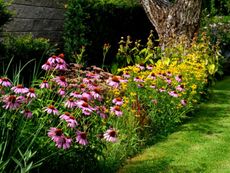 How Wildflower Strips Help Attract Pollinators To Your Yard
How Wildflower Strips Help Attract Pollinators To Your YardIf you have a small garden spot or strip available, fill it with wildflowers for our hungry pollinators. Click to learn more.
By Tonya Barnett
-
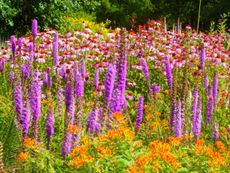 10 Knockout Native Flowers For A Punch Of Color
10 Knockout Native Flowers For A Punch Of ColorGrowing native is the way to go. See our list of ten native wildflowers that will knock you out with color.
By Amy Grant
-
 Pretty Plants For A Pastel Flower Bouquet
Pretty Plants For A Pastel Flower BouquetRoses aren’t the only romantic flower. Some romantic pastel flowers can fill in beautifully.
By Tonya Barnett
-
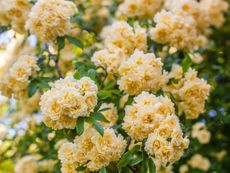 Soft Yellow Plants For A Sunny Pastel Garden
Soft Yellow Plants For A Sunny Pastel GardenClick here for ideas on some pale yellow flower varieties for pastel garden designs.
By Tonya Barnett
-
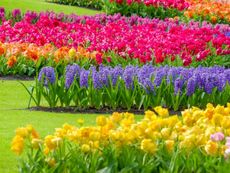 Most Common Flower Color In The World
Most Common Flower Color In The WorldWhat are the most common and least common flower colors in the world? Click here to find out.
By Mary Ellen Ellis
-
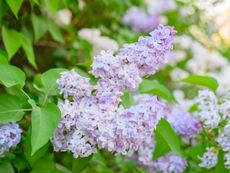 Pastel Plants For A Lovely, Light Purple Flower Garden
Pastel Plants For A Lovely, Light Purple Flower GardenClick here for ideas on some light purple plants for a pretty, pastel garden display.
By Tonya Barnett
-
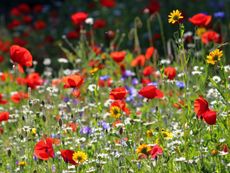 Plant Wildflower Seeds In Fall for A Stunning Spring Display
Plant Wildflower Seeds In Fall for A Stunning Spring DisplayCan you plant wildflower seeds in fall? What makes fall the best time to sow wildflower seeds? Click here for more.
By Tonya Barnett